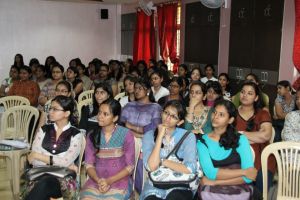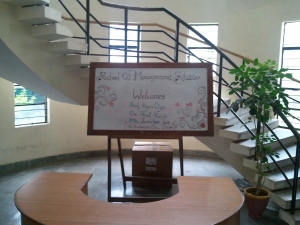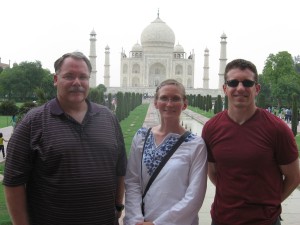We spent the day in Pune at a 5-year-old college called FLAME, or the Foundation for Liberal and Management Education. What an inspiring place! The FLAME founders have sought to create an oasis of liberal arts education in India. They have built a lush, beautiful campus on the outskirts of Pune that includes many of the amenities that you would in an American liberal arts college–residence halls, student center, athletic facilities, etc.
We were most impressed by two programs that FLAME requires of its undergraduate students–DIP and DAP. The Discover India Program (DIP) requires students to do an “Indian immersion project” at a location of their choice. This project must be done at a site where they can study both “heritage India” and contemporary India in an interesting way. The highlight of the program is the 10-day site visit that the students do, accompanied by a faculty leader. The students are expected to engage with the society as much as possible, an important assignment in a country where caste and class tend to divide and isolate people. The reports and presentations that result from the DIP are very impressive.
The Development Activities Program (DAP) requires students to spend one month in a summer doing an internship with an NGO. Again, they are asked to do project-based learning that will enable them to become better informed and more sensitized to India’s problems and begin the process of envisioning solutions to them.
FLAME’s founders had the luxury of a clean slate, and they have drawn up a fantastic program that should continue to improve. Hopefully, SAU faculty and staff can lend their expertise to assist the FLAME project.
We concluded our India experience with a traditional Indian dinner at the home of Indira Parikh, FLAME’s Founder President. It was a tremendous honor to be welcomed into the home of one of the great female scholars and educational leaders of her generation, a woman who has received countless honors and awards worldwide. It also speaks volumes about SAU’s progress in India!













